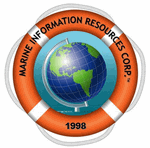Session
2
Start Date
17-10-2019 10:15 AM
End Date
17-10-2019 10:30 AM
Description
The Spotter is an accurate, low-cost, easily deployable and robust solar powered wave buoy recently developed by Sofar Technologies (formerly Spoondrift). Spotter reduces costs and complexity of surface wave and current measurements, which can be useful for academic, military, and commercial research into surface wave and wave-driven dynamics. We performed a series of validation tests and research experiments with the Spoondrift Spotter. The low-cost and compact Spotter makes it easy to deploy arrays of wave buoys which was previously not feasible (or cost prohibitive) with traditional wave buoys. A well-designed array can provide a direct measurement of the directional wave spectrum, which is not available from a single buoy measurement. To explore this possibility, we performed a series of experiments, where multiple Spotters were deployed in a variety of configurations. The array allowed for the application of plane-wave beamforming techniques to compute wave directional spectra, which were found to compare well with those obtained by conventional methods.
Included in
Directional Spectrum Measurements by the Spotter: a new Developed Wave Buoy
The Spotter is an accurate, low-cost, easily deployable and robust solar powered wave buoy recently developed by Sofar Technologies (formerly Spoondrift). Spotter reduces costs and complexity of surface wave and current measurements, which can be useful for academic, military, and commercial research into surface wave and wave-driven dynamics. We performed a series of validation tests and research experiments with the Spoondrift Spotter. The low-cost and compact Spotter makes it easy to deploy arrays of wave buoys which was previously not feasible (or cost prohibitive) with traditional wave buoys. A well-designed array can provide a direct measurement of the directional wave spectrum, which is not available from a single buoy measurement. To explore this possibility, we performed a series of experiments, where multiple Spotters were deployed in a variety of configurations. The array allowed for the application of plane-wave beamforming techniques to compute wave directional spectra, which were found to compare well with those obtained by conventional methods.




